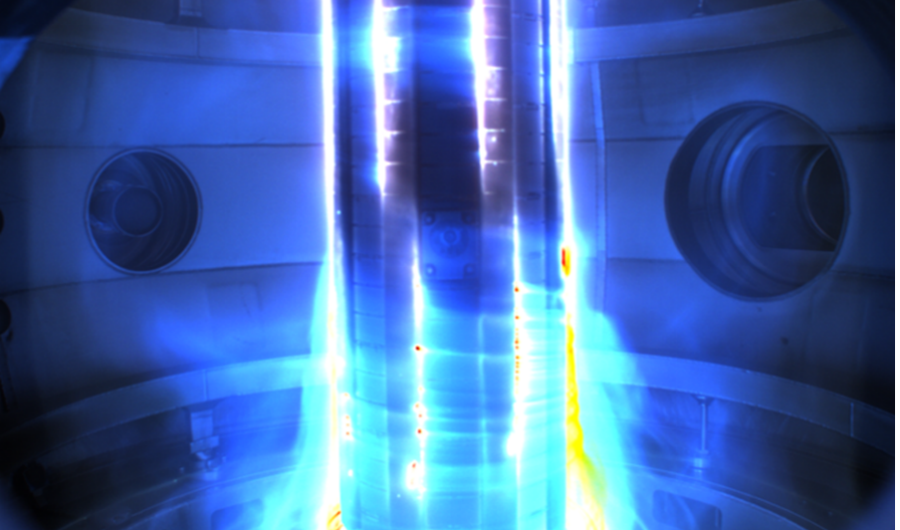 News
News
Tokamak Energy Ltd chooses the UNITUS school of Engineering…
An important collaboration between the UNITUS school of engineering and Tokamak Energy Ltd (TE) was set. TE is a privately funded company based in the UK [1]. Founded in 2009, the company is developing compact fusion power plants based on two promising technologies: Spherical Tokamaks (STs) and High Temperature Superconductors (HTSs). As regards STs, they are a particular type of tokamak with a higher aspect ratio than that of conventional tokamaks. The ST concept demonstrates all the main features of more compact tokamaks having the real potential to significatively reduce costs and timescales on the path to Fusion power, at the same time. As for HTSs, this technology allows significant increase in the toroidal magnetic field, which it was found to improve the plasma confinement in STs. In addition, HTS magnets can operate at relative high temperatures (conventional superconductors are cooled to 4 K, while an HTS usually operates at 80 K), which is beneficial in the design of these components where space is very limited in the central zone of a ST device. The combination of the efficiency of STs and the benefits of the HTSs opens a route to lower-volume fusion reactors [1]. In summary, the mission of Tokamak Energy is to exploit this opportunity by pioneering the use of spherical tokamaks in conjunction with HTS magnets technology. Tokamak Energy Ltd is presently operating ST40 [1][2]. ST40 is a new generation high magnetic field ST and results as the highest magnetic field device of its kind (capable of reaching values above 2 Tesla). It aimes at demonstrating burning plasma condition parameters for a ST device. In the recent years, ST40 has been upgraded with the aim to reach higher plasma performances and to prepare the machine for the ongoing experimental campaign started in May 2021 [2].
In this context, a new record was recently achieved within a ST40 experiment of March 2022: Tokamak Energy has demonstrated a world-first with its privately funded ST40 spherical tokamak, achieving a plasma temperature of 100 million degrees Celsius, the threshold required for commercial fusion energy [1]. This is by far the highest temperature ever achieved in a ST and by any privately funded tokamak. In this video (Moving closer to commercial fusion-YouTube link), published by Tokamak Energy website, is presented the announcement of the record. The result was obtained also thanks to the analyses commissioned to the UNITUS team by TE as one of several studies to prepare ST40 for the experimental operations [2], in which this incredible performance has been reached.
As a matter of facts, within the ST40 upgrade, the necessity to analyse in detail the electromagnetic behaviour of the main device components under the loads coming from some plasma abnormal events, namely disruptions [3], has recently emerged in order to verify the ST40 design or drive further modifications. In this context, several studies to analyse the ElectroMagnetic (EM) response of ST40 components during a plasma non ordinary scenario have been carried out by UNITUS by means of a specific coupling tool procedure, following a recently developed methodology fully described in [3]. The main output of these studies is the evaluation of the EM force density evolution that affect ST40 components during a plasma disruption for subsequent mechanical assessments. In addition, the UNITUS team is engaging in the study of innovative materials, such as liquid metals or tungsten foams for the design of plasma facing components to be implemented in ST40. Finally, to support the ST40 Tokamak operations, causes and effects associated with disruptions are under investigation by the UNITUS team. In this regard, the focus is on the population of a disruptions database aimed at characterizing off-normal plasma scenarios and at providing lessons to be learnt for the next ST40 experimental campaign and for the design of future ST devices.
As for TE future steps, the ST40 device will now undergo a new upgrade and be used to develop technologies for future devices. The ST-HTS (or Intermediate Device), which will be the world’s first spherical tokamak to demonstrate the full potential of HTS magnets, is due to be commissioned in the mid-2020s. This device will demonstrate multiple advanced technologies required for fusion energy and inform the design of a world first fusion pilot plant, namely ST-E1, to be commissioned in the early 2030s [1]. Each of these future steps set out in the Tokamak Energy roadmap on its path to commercial fusion power will directly involve the UNITUS school of engineering thanks to the scientific collaboration signed between the two institutions.
[1] https://www.tokamakenergy.co.uk[2] “M. Romanelli et al. “Preparing for first diverted plasma operation in the ST40 high-field spherical tokamak.”, 47th EPS Conference on Plasma Physics (June 2021), P3.1058.”[3] R. Lombroni, F. Giorgetti, G. Calabrò, P. Fanelli, and G. Ramogida, “Using MAXFEA code in combination with ANSYS APDL for the simulation of plasma disruption events on EU DEMO.”, Fusion Eng. Des., no. March, p. 112697, 2021.